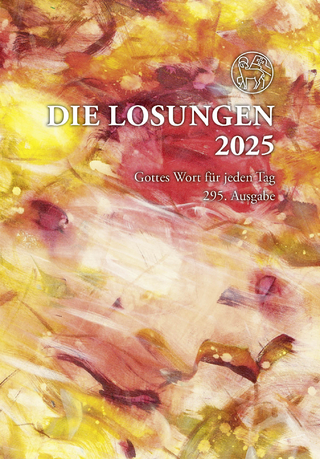A Cloudburst of Blessings
Wandel edition khordong (Verlag)
978-3-942380-23-2 (ISBN)
Lese- und Medienproben

Als einer von Chhimed Rigdzin Rinpoches älteren Schülern wird Martin Boord bereits vielen innerhalb der Khordong-Sangha bekannt sein. Nachdem er den Lama während einer Pilgerreise durch Indien im Jahre 1973 traf, lud Martin einige Jahre später C. R. Lama nach Großbritannien ein, um die Übertragung des Byangter Phurpa (Vajrakila des Nördlichen Schatzes) in Europa zu beginnen. Martin hat viele Belehrungen von Rinpoche erhalten, doch den Schwerpunkt bildeten die Vajrakila- und Schützerbelehrungen. Dreimal bekam er Belehrungen zu Vajrakila und übersetzte einen langen Praxistext. Das Thema des Byangter Phurpa nahm er mit zur Universität und absolvierte dort den Bachelor of Arts (BA) in „Religious Studies (Buddhism)“. Über die Gottheit Vajrakila promovierte er zum Dr. phil. an der „School of oriental and african study“ der Londoner Universität („The Cult of the Deity Vajrakila“, Tring, 1993, überarbeitet und ergänzt erhältlich als Gathering the Elements, Wandel Verlag, 2013). Als Martin Boord 1967 das erste mal dem tibetischen Buddhismus im Katmandutal begegnete, war er sehr beeindruckt von der Großartigkeit und Schönheit des Tantrayana und des tibetischen Buddhismus. Er begann mit seinem formellen Unterricht in Dharamsala an der Tibetischen Bibliothek, indem er den Sutrapfad für 2 Jahre studierte, obwohl er bereits an den Belehrungen von Padmasambhava interessiert war. Dabei traf er seinen ersten Lehrer, Lama Khandrul Yeshe Dorje, bekannt als der „Regenmacher“, ein Nyingma Lama. Martin lebte mit ihm als sein Gehilfe und Adjutant für einige Jahre und blieb für insgesamt 8 Jahre in Indien, hauptsächlich an tibetischen Orten mit Tibetanern. Er studierte ebenso Sanskrit um das Dharma in seiner ursprünglichen Form kennenzulernen. Ein weiterer wichtiger Lehrer von dem Martin wichtige Belehrungen erhielt war S.H. Dudjom Rinpoche, das Oberhaupt der Nyingma Schule des tibetischen Buddhismus. Martin traf S.H. Chhimed Rigdzin zum ersten mal, als er 1973 mit Lama Khandrul Yeshe Dorje auf Pilgerreise in Sarnath war. Zurück in England ließ er sich 1974 in Cornwall nieder und gründete mit seiner Frau ein kleines Dharmazentrum und lud 1979/80 Chhimed Rigdzin Rinpoche zu seinem ersten Besuch nach England ein. Daraufhin folgte Martin Rinpoche nach Indien zur Universität in Shantiniketan, bekannt durch Rabindrad Tagore, wo Martin sich dem Übersetzerteam um Rinpoche für einige Zeit anschloß. Wieder zurück in England und nach einem lockeren Drei-Jahres-Retreat in Schottland fuhr er an der Universität von London mit seinem Studium des Buddhismus fort und zog nach dem PHD (Doktorgrad) nach Oxford um. Martin Boord lebte lange Oxford und widmet sich vor allem der Übersetzung tantrischer Texte zur Visualisationsgottheit Vajrakila. Seine erste Veröffenltichung, die bei edition khordong erschien, ist seine mehrere Jahre dauernden Übersetzung des Phur ‚grel ‚bum nag, die Schwarzen 100.000 Worte, einem Text der Kamatradition. Es handelt sich dabei um einen Bericht von einem Vajrakila Retreat, das Padmasambhava mit Vimalamitra und Shilamanju in Nepal im 8. Jahrhundert abgehalten haben. Dieser Bericht wurde von Padmasambhava an die Yogini Yeshe Tsogyal gegeben. Er ist der bekannteste und meist respektierte Kommentar zu Vajrakila. Dieser Text ist nun zur englischsprachigen Veröffentlichung erhältlich. Weitere Informationen zum Buch: „A BOLT OF LIGHTNING FROM THE BLUE„. Martin Boord kam das erste mal im Jahre 1998 zu Belehrungen über Vajrakila nach Deutschland. Dort im Pfauenhof Retreat machte er uns mit der Geschichte und der Meditationspraxis von Vajrakila vertraut. 1999 begleitete er auf ähnliche Weise ein Vajrakila Retreat mit S.H. Chhimed Rigdzin Rinpoche in Berlin und ergänzte es durch seine genauen Erläuterungen. Nun wird Martin Boord in einigen Ländern Europas regelmäßig zu Belehrungen des Vajrayana eingeladen, so auch nach Österreich und Schweden und begleitete Rinpoche auf einigen Stationen in Europa.
Intended only for dedicated disciples of outstanding integrity, the purpose of a tantric empowerment, initially bestowed by the sprinkling of water, is to wash away defilements and purify the disciple’s body, speech and mind in order to prepare him or her for the profound practices of speedy maturation and liberation on the stages of development and perfection. Being led into the very heart of the teachings, symbolised by a throne at the centre of a spacious maṇḍala, the worthy disciple is introduced to his own buddha nature in the form of a wisdom deity and is taught to meditate upon the special qualities and activities of that deity in order to awaken and strengthen these potentialities within himself. Receiving the seed of the mind of enlightenment (bodhicittabindu), in both relative and absolute forms, directly from his guru, the disciple is subsequently taught how to arouse and maintain this precious essence within himself. Of crucial importance in the life of anyone who wishes to follow the path of secret mantra, the occasion of a tantric empowerment is a pivotal moment of guidance in which the stages and direction of the path to be followed are made clear, and the sacred bond that is forged between the guru and disciple at this time constitutes a samaya vow of amazing power and depth. Having washed away the impure habit patterns of worldly entanglement, the guru gradually introduces the disciple to increasingly subtle states of consciousness, and thus the disciple awakens to an open and fresh paradigm of being, in which the material world is transformed into a pure land and all living beings are viewed as deities. The ultimate state of a buddha, however, being radiantly clear and utterly free of grasping conceptions, the disciple must eventually discard even this purified restructuring of his outlook in order to reach the final stage of complete liberation. This path is not for the faint hearted, and only those who are able to take upon themselves the vows of heroic conduct will ultimately be prepared to face the dynamic energy of blissful wisdom as they open to the non-dual unity of all things within vast, all-pervading emptiness. ITI SAMAYA With regard to the way in which the disciple should prepare himself for a vajrayāna empowerment, see The Path of Secret Mantra: Teachings of the Northern Treasures Five Nails, and with regard to the characteristics of the ācārya who is to bestow the empowerment, the nature of the disciple who is to receive it, the benefits to be derived from empowerment and the disadvantages of not being initiated, see Gathering the Elements, Ch.VI.
Intended only for dedicated disciples of outstanding integrity, the purpose of a tantric empowerment, initially bestowed by the sprinkling of water, is to wash away defilements and purify the disciple's body, speech and mind in order to prepare him or her for the profound practices of speedy maturation and liberation on the stages of development and perfection. Being led into the very heart of the teachings, symbolised by a throne at the centre of a spacious man d ala, the worthy disciple is introduced to his own buddha nature in the form of a wisdom deity and is taught to meditate upon the special qualities and activities of that deity in order to awaken and strengthen these potentialities within himself. Receiving the seed of the mind of enlightenment (bodhicittabindu), in both relative and absolute forms, directly from his guru, the disciple is subsequently taught how to arouse and maintain this precious essence within himself.Of crucial importance in the life of anyone who wishes to follow the path of secret mantra, the occasion of a tantric empowerment is a pivotal moment of guidance in which the stages and direction of the path to be followed are made clear, and the sacred bond that is forged between the guru and disciple at this time constitutes a samaya vow of amazing power and depth. Having washed away the impure habit patterns of worldly entanglement, the guru gradually introduces the disciple to increasingly subtle states of consciousness, and thus the disciple awakens to an open and fresh paradigm of being, in which the material world is transformed into a pure land and all living beings are viewed as deities. The ultimate state of a buddha, however, being radiantly clear and utterly free of grasping conceptions, the disciple must eventually discard even this purified restructuring of his outlook in order to reach the final stage of complete liberation. This path is not for the faint hearted, and only those who are able to take upon themselves the vows of heroic conduct will ultimately be prepared to face the dynamic energy of blissful wisdom as they open to the non-dual unity of all things within vast, all-pervading emptiness. ITI SAMAYAWith regard to the way in which the disciple should prepare himself for a vajraya na empowerment, see The Path of Secret Mantra: Teachings of the Northern Treasures Five Nails, and with regard to the characteristics of the a ca rya who is to bestow the empowerment, the nature of the disciple who is to receive it, the benefits to be derived from empowerment and the disadvantages of not being initiated, see Gathering the Elements, Ch.VI.
| Erscheinungsdatum | 18.12.2017 |
|---|---|
| Reihe/Serie | edition khordong ; 23 |
| Khordong Commentary Series ; 13 | Vajrakila texts of the Northern Treasures Tradition ; 4 |
| Zusatzinfo | line drawings by Nick Dudka, Robert Beer and Martin Boord |
| Verlagsort | Berlin |
| Sprache | englisch; Sanskrit; Tibetan |
| Maße | 150 x 220 mm |
| Einbandart | gebunden |
| Themenwelt | Geisteswissenschaften ► Philosophie ► Östliche Philosophie |
| Geisteswissenschaften ► Religion / Theologie ► Buddhismus | |
| Religion / Theologie ► Christentum ► Gebete / Lieder / Meditationen | |
| Schlagworte | 5. Dalai Lama • Black Razor Vajraki la • Black Razor Vajrakīla • Byangter • Dorje Phurba • Empowerment Ritual • Godemchen • Homa • Kilaya • Mahottaraki la • Mahottarakīla • Nördliche Schätze • Northern Treasures • Nyingma • Nyingmapa • Padma Tinley • Rigdzin Godem • Rig-'dzin padma 'phrin-las • Rig-’dzin padma ’phrin-las • Rig-'dzin rgod-ldem • Rig-’dzin rgod-ldem • Tantra • Tibetan tantra • Tibetisches Tantra • Vajraki la • Vajrakila • Vajrakīla • Water Empowerment • water initiation |
| ISBN-10 | 3-942380-23-4 / 3942380234 |
| ISBN-13 | 978-3-942380-23-2 / 9783942380232 |
| Zustand | Neuware |
| Haben Sie eine Frage zum Produkt? |
aus dem Bereich



